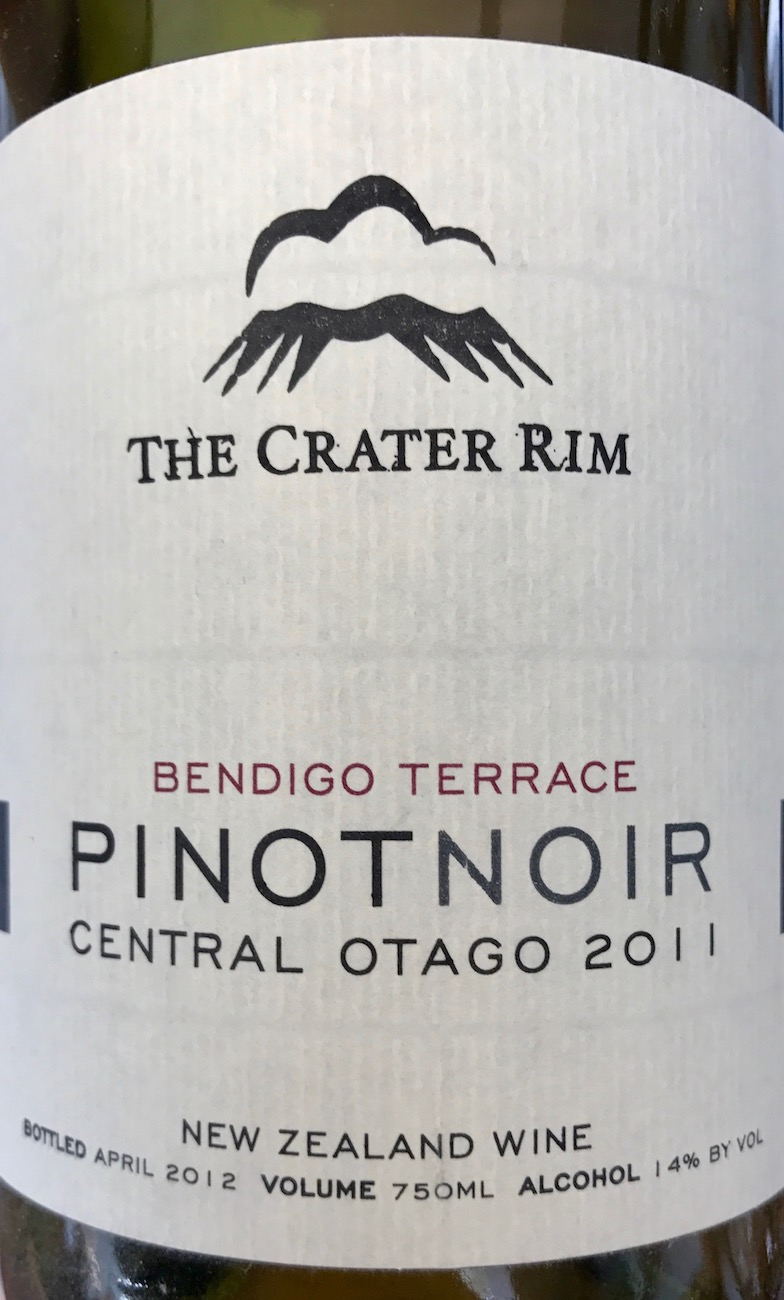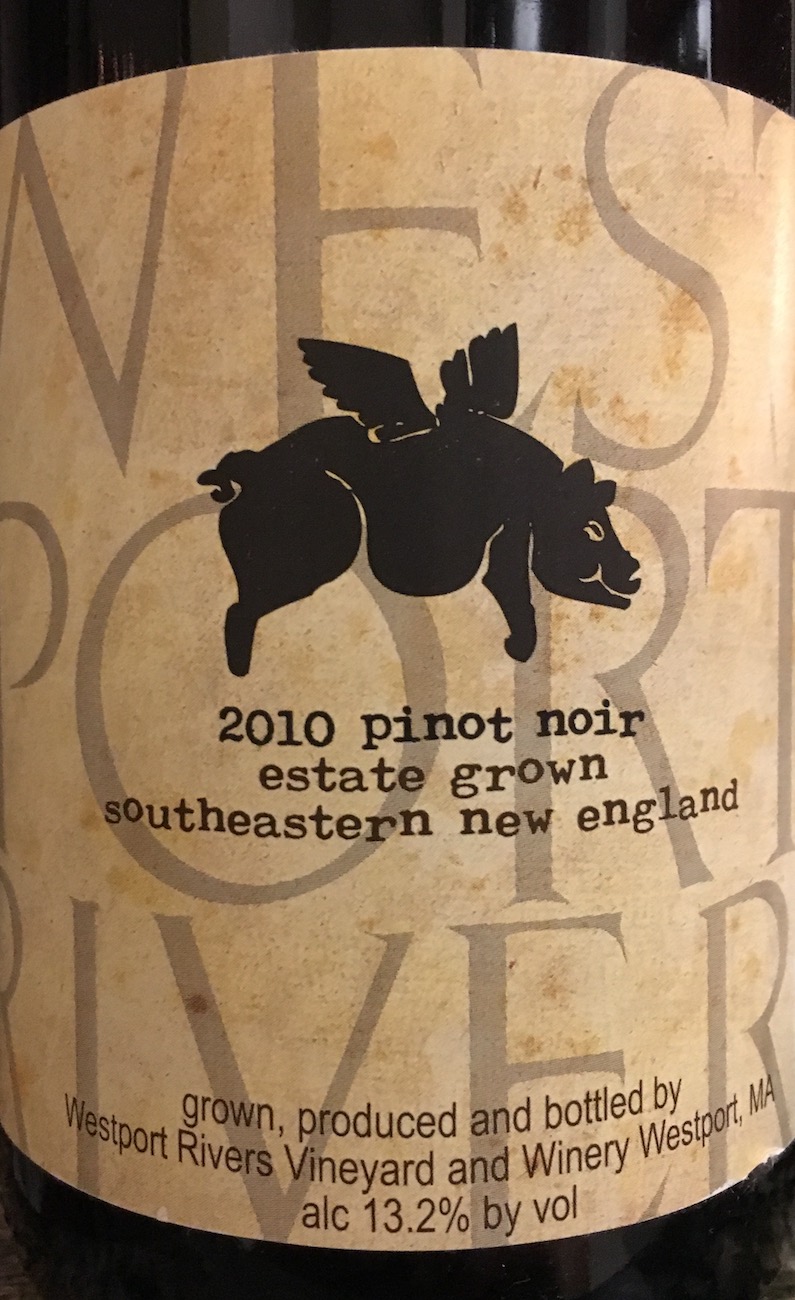August 18 marks the "official" celebration of one of my favorite wines: Pinot Noir. While Meghan is not the unabashed fan that I am, I maintain that diversity, versatility, and ubiquity make Pinot one of the world's best grapes. Let's explore this.
For the beginner, Pinot Noir is a red wine grape grown around the world, but whose centers of gravity (if you will) are regions such as Burgundy in France, Oregon in the United States, and Central Otago on New Zealand's South Island. Investigate a map, and you'll see that each of these superstar Pinot Noir regions fall in a quite narrow band of about 44 to 48 degrees latitude (Burgundy and Oregon in the Northern Hemisphere, Central Otago in the Southern). In fact, think of Pinots you've had elsewhere, and you'll quickly realize how concentrated production is within that latitudinal band; Burgenland in Austria, northern Italy, Tasmania in Australia, and Massachusetts in the United States all fall within or very near the range. California's Pinot making regions (Russian River Valley and Sta. Rita Hills come to mind) are outliers just a bit too far south, but Pinot Noir produced there also tends to be notably different than that produced to the north in Oregon's Willamette and Umpqua Valleys. It is, in general, a red grape remarkably well suited for cooler climates, but offers tremendous geographic diversity within those climates.
We talk a lot about whether a wine is best suited for drinking with food or drinking alone. On this measure of versatility, Pinot Noir tends to be well suited for both. It's a great crossover red for drinking with heartier editions of dishes you might otherwise pair with a white wine (looking at you, salmon and turkey), and is one of the best red wine choices for sipping when there's no food in choice (red wine often feels incomplete without a meal). Pinot joins the likes of Cabernet Sauvignon, Merlot, Chardonnay, and Sauvignon Blanc in the pantheon of the most ubiquitous wines -- a bottle of which you'll find on almost every menu -- in the United States.
We've tasted our way through a veritable world tour such as to illustrate the differenes between regions. Seek these out.
2016 Domaine Andre Neveu Sancerre Rosé Le Grand Fricambault (Sancerre, France)
Though the French region of Sancerre is known mostly for its white Sauvignon Blanc wines, French Pinot Noir is known mostly for its production in Burgundy, and the country's rosé perhaps most famously comes from the region of Provence on the Mediterranean coast… the three come together nicely in this rosé of Pinot Noir from Sancerre. Pinot Noir actually makes exceptional rosé wines. This bottle in particular demonstrates a slatey minerality, strawberry, and vanilla ice cream in a nose that feels a bit more austere than some other free spirited rosés. It tastes much creamier than it smells, with a little peach and sweet orange in a palate that is surprisingly not acidic at all, and quite floral in the middle. Rosé pairs well with light dishes featuring a strong arugula component, such as the salad we drank alongside this bottle. Give it a try.
Further reading: Celebrate Rosé Day with these four wines we tried at Slate Wine Bar in Washington, DC
2013 Domaine Jean Guiton Savigny-lès-Beaune (Burgundy, France)
Burgundy (Bourgogne, in French), a sizable region in east-ish central France, is known overwhelmingly for its Pinot Noir. Exceptions include the red wines of Beaujolais, made primarily from the Gamay grape, and the Chardonnays of Chablis. For our purposes here, though, we're talking about Pinot Noir. Most drinkers are satisfied simply with the notion of sipping on "a Burgundy", i.e. a Pinot Noir from this region. That said, a number of often subtle climatic, geographic, and stylistic variations produce substantive differences in wines produced in various towns throughout the region. So it is that I often gravitate to the rather substantive wines from the town of Beaune -- where even the lower end bottles tend to be very good, so great values are to be had -- and the more delicate and playful (though usually more expensive) wines from Volnay. So, today, we went with this Beaune, whose nose was one of the most extraordinary I've had in a long time. We opened it for an hour, swirled it bit in the glass, and unlocked an extraordinary spicebox nose of clove and nutmeg. Wow. Continued swirling mellows it into cocoa powder and cherries, and then mesquite barbeque and incense after several minutes. It's cool and smooth on the palate, albeit a bit metallic in the back when you first star drinking. Quite dry and not terribly fruit forward, I'd recommend you enjoy this with food to help balance out some of its eccentricities. Chicken with simple herbs will do nicely.
2013 Eisold Smith Pinot Noir (Oregon, USA)
The Pinot Noirs from Oregon's famous Willamette Valley -- and less well known but equally delicious Umpqua Valley -- are cool climate red at its very best. Tending to be smooth, mellow, fruity, yet substantive, they are extraordinarily versatile with and without food. One of our favorite Oregon wine producers, we've revisited Eisold Smith rather often in Wine:Thirty Flight. We're always eager to share them. This 2013 vintage is a pleasing, more tart offering than some other Pinot Noirs we've tried from different years in the same region. We're told it was rather wet and humid that year. We'd characterize this Pinot Noir as raspberry restrained by cedar. Swirling in the glass will bring out some smoothness in the nose and on the palate. You could drink this now, or hold onto it for a bit. Adam's hunch was that you could hang on for seven to twelve years, but we can't imagine being able to wait that long to have another glass.
Further reading: Passionate winemaking yields stunning results for Willamette Valley's Eisold Smith Wines
2011 The Crater Rim Pinot Noir Bendigo Terrace (Central Otago, New Zealand)
Far more full bodied and fruitier than the Beaune that we tried on the same evening, this bottle from Crater Rim is woody and smoldering, substantive with even some intriguing Tempranillo qualities. It tasted surprisingly hot, making it possible to confuse with something from California, spicy, and generally driven more by heat and body than by fruit. In considering the spectrum of Pinot Noir on offer around the world, we like this as an example of New Zealand because it melds some of the heat you'll find in California with the fruit forwardness you'll find in Oregon, and some of the terroir-driven complexity you'll find in the Old World. Very nice.
2012 Hartford Court Pinot Noir (California, USA)
This California Pinot Noir took us by surprise for its intense red nose, in ways more resembling the alcoholic fruitiness of a Zinfandel and the shale notes of Petit Verdot. Far more substantial than your typical Pinot, we ultimately found the brambly palate of beach plum and other berries to be very smooth. This is one of those hearty Pinots that you can love drinking in the same sitting as a Cabernet Sauvignon. We generally describe California Pinots -- by far the most different from every other bottle on this list -- as feeling "hotter" than their cousins from cooler climates, i.e. they tend to feel more alcoholic, less delicate, and rather demanding of a hearty food pairing. It is telling that we so often think of Zinfandel (an incredibly hearty red wine varietal) when drinking these.
2014 Cantina Tramin (South Tyrol, Italy)
This contestant comes from Italy's north eastern province "Alto Adige" (also South Tyrol or Südtirol) bordering Switzerland to the west and Austria to the north and east. Pinots produced here can be less delicate than their cousins from around the world, and the Tramin offered that characteristically Italian earthen acidity that makes it a worthy food wine, brightened somewhat by Pinot Noir's signature red fruit notes. The nose was of cocoa powder and chocolate cherry, and it finished with a nice bite.
Further reading: Vino Volo airport wine bars make travel better
2010 Westport Rivers Pinot Noir (Massachusetts, USA)
A flying pig on the label earns this wine the nickname "Little Pig". It's one of our all-time favorites from Westport Rivers Winery, itself one of our favorites. It really showcases the substantive Pinot Noir that good Massachusetts winemakers can produce when the weather cooperates. A great year there, 2010 produced this wine with a little earth, mushroom, and cocoa powder in the nose followed by fruit elements that are rather Burgundian (French) in style, with some acidity that is reminiscent of some Pinot Noir we've had from the Australian island of Tasmania. Lots to think about here! The sense of cranberry juice on the palate befits a wine produced in a big cranberry-growing region, and it's slightly jammy at the end.
Further reading: Westport Rivers truly sparkles as the premier Massachusetts vineyard and winery





